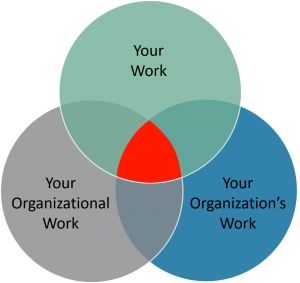We’ve heard a great deal about “essential workers” in recent months. Our understanding of who falls into that category is shifting to include not just first responders and front-line health care workers, but now manufacturers of disinfectant wipes and face shields!

As I sat enjoying an evening porch visit with a long-time friend recently, she reflected on some of the things she’s learned during the pandemic. “I now know that I must do two things, even if I have to do them differently. I have to connect with people, and I have to create. Non-negotiable to me being fully me.”
Connect and create. Essential work for her. Mine might be learn and serve. What would your two things be? Not theoretically, but in real life, what have you learned your essential work actually is?

This idea reminds me of planning conversations I have with leadership teams who are refining their organizational mission statements or their strategies. What is your core business, versus those things that fall into the “nice to do if we have time” category, and what are actually distractions for you? Sometimes strategic plans highlight new opportunities without affirming the essential work of the organization.
These conversations also happen with CEOs and Executive Directors who need to regain focus on the work that is theirs to do within their role, especially in unusual times when they find themselves being drawn into more operational decisions than they normally would be. It’s easy to confuse work that needs to be done with work you need to do.

It’s therefore critical to understand the essential work of your organization, of your role within it, and of you personally. These three won’t always overlap. But when they do, you’ve found a precious sweet spot.
Photos by Kendall Ruth and Elijah Hiett on Unsplash
